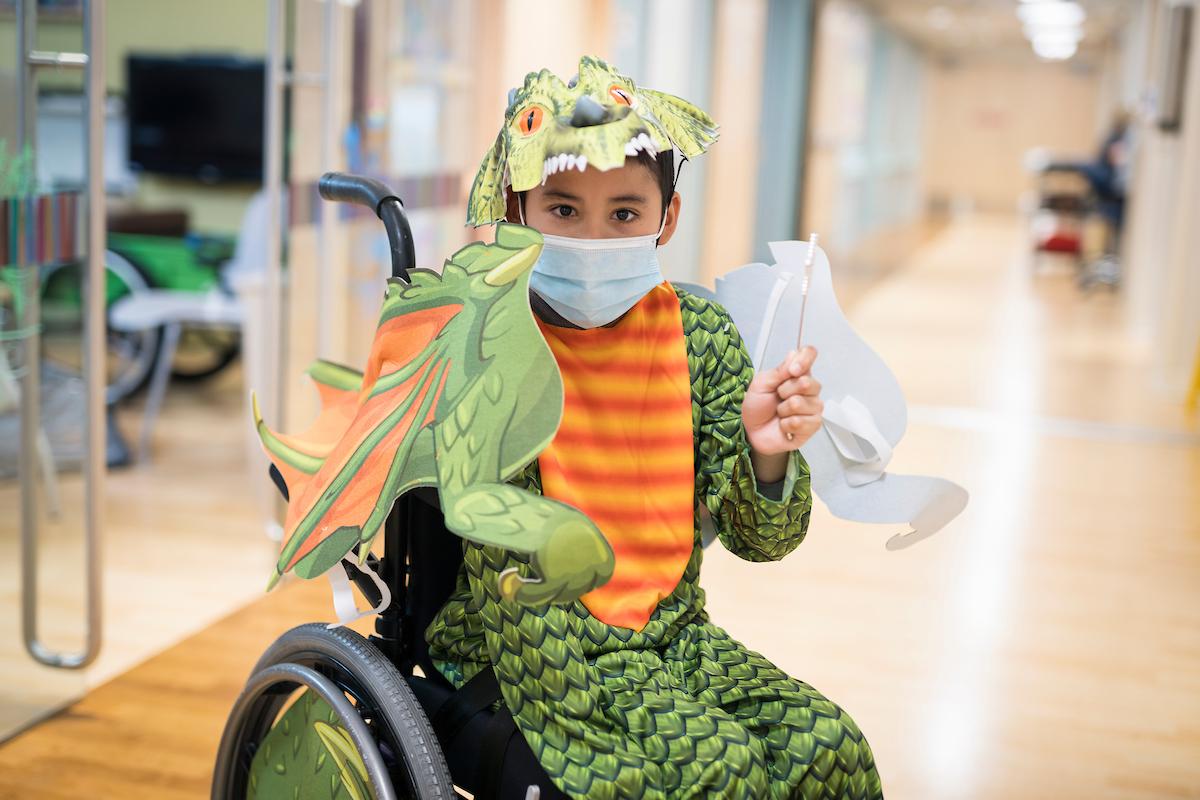Family Makes 700-Mile Journey to Treat Daughter’s Cerebral Palsy
When her daughter Sophia was diagnosed with cerebral palsy (CP) several months after her first birthday, Susan Slinkard found herself struck by a strange feeling: relief. Sophia had been born two months premature. There was no hint of anything wrong at the time. But as her 6-month check-up came and went, she still wasn’t sitting up. “We were told that Sophia likely had a bit of a developmental delay. But when she was barely crawling at 14 months, we knew it was something more serious,” Slinkard says. “As much as getting the diagnosis of cerebral palsy was painful, and as much as we didn’t want to put a label on our child, the diagnosis brought us some closure. It provided answers and next steps.” Sophia would receive care near the family’s home in Fayetteville, Arkansas, and was eventually able to walk with the assistance of a walker. Because the intervention came so early, Sophia responded well to therapy. “It’s her normal,” Slinkard says. “But as a parent, you struggle. While Sophia could get around, it was hard for her, and it was only getting worse as she grew. We always wondered if we could be doing more.” It was with “more” in mind that when a local provider spoke to them about touring the James R. Gage Center for Gait and Motion Analysis at Gillette Children’s Specialty Healthcare, the Slinkard family began looking into care sites outside of Arkansas. “We researched the best treatment centers for cerebral palsy in the country,” Slinkard says. “Ultimately, it came down to Gillette and a hospital in St. Louis. Our neurodevelopmental pediatrician was familiar with Gillette and strongly advised we go there because of their comprehensive, multidisciplinary approach.” Sophia had her first appointment at Gillette in April of 2013. As Slinkard will tell you, this approach was on full display from the beginning. “I think we saw at least six different doctors and therapists,” Slinkard says. “In that single visit, they explained more about Sophia than we had ever known. It was both strange and comforting to have that many people focused on your child.” Among the physicians in Sophia’s first consult was Marcie Ward, MD, a pediatric rehabilitation medicine specialist. “At Gillette we prefer to evaluate patients as a team, and that directs the way we proceed with our patients’ care,” Ward says. “Here, we treat children who have cerebral palsy every day; we know their needs well. The parents and family are an integral part of the decision process, so rather than split up a number of individual appointments, we get everyone in the same room and on the same page.” After Sophia’s initial visit, her team put together a comprehensive treatment plan that included Botulinum Toxin and Phenol injections, serial casting, and several other treatment options that the family had not been offered in the past. Sophia’s doctors were hopeful that these procedures would mitigate Sophia’s spasticity and allow her greater ease when walking. The Slinkard family would return to St. Paul for treatment every three months over the next year. At that time, Ward and Sophia’s care team determined that they weren’t seeing the progress they had hoped to see. Having exhausted alternative measures, the Slinkard family scheduled Sophia for a selective dorsal rhizotomy, a neurosurgery that permanently reduces spasticity by cutting the nerve rootlets in the spinal cord that are sending abnormal signals to the muscles. “We had read about rhizotomy surgery, but there wasn’t a hospital that could perform the procedure in Arkansas,” Slinkard says. “We were looking for the best long-term solution for Sophia, and the knowledge that everything—the surgery and the rehab that would follow—would be done at Gillette made us confident in moving forward.”
An Out-of-State Solution

“They Don’t Perform Rhizotomies in Arkansas”

Removing Barriers
Following selective dorsal rhizotomy surgery, patients like Sophia undergo weeks of inpatient rehabilitation as their muscles learn to move without their former level of tightness. “During this time, we quickly see the untapped potential that the procedure can unlock,” Ward says.
“From the time Sophia was about 2 years old, she could never walk flat on her feet even with bracing,” Slinkard says. “The first time she walked flat-footed on parallel bars, I broke down and immediately started crying. Seeing her be able to do that, you can’t even imagine how that felt.”
The family returned to Arkansas following Sophia’s rehab, but progress didn’t stop there. One year later, her parents say they can barely keep up with her.

“With her braces on she can walk completely flat-footed, with heel contact on every step,” Slinkard says. “Sophia’s always been an independent girl, and now that she can move around better on her own, you can just see her confidence growing.”
Sophia, now an active 10-year-old, still participates in therapy at home and occasionally returns to Gillette for her follow up appointments with Ward and the rest of her team.
“Thinking about where we started, every time we come to Gillette we just can’t thank them enough,” Slinkard says. “The staff there played a vital role in helping our girl get to where she is today, and every step she takes is a testament to the countless dedicated individuals who made it possible.”
Two Years Later
This post was originally published in 2016. Since then, Susan has passed along the following updates:
“One year post-SDR, we returned to Gillette for a Single-Event Multilevel Surgery (SEMLS) orthopedic surgery with Dr. Tom Novacheck. Coupled with the SDR and ongoing therapy, the changes as a result of these two major surgeries is immense. Sophia is now able to walk with heel strike and without her toes turning in. Her strength has increased significantly, and she can even hop on one foot! Her balance has improved so much, as well as her overall coordination. In fact, her walking improved so much, she was able to move from her Ankle-Foot Orthosis (AFO) to much smaller orthotics that simply fit down inside her shoes. This was a huge leap for our girl!
Sophia continues to participate in tap dancing at school, and is now able to do so without having to hold on to someone or something, and without falling, especially during turns and jumps. Sophia is just about to finish fourth grade, and it’s been incredible to see the progress she’s made. We are so grateful for the care that Sophia has received at Gillette, and we’ve really appreciated the opportunity to share her story!”

Sophia today, Age 10







